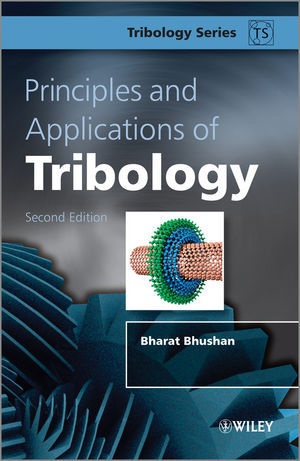Read more
Informationen zum Autor Dr Bhushan is Ohio Eminent Scholar and The Howard D. Winbigler Professor as well as Director of the Nanoprobe Laboratory for Bio- & Nanotechnology and Biomimetics at The Ohio State University. During his career he has received a number of awards and accolades as well as being central to teaching and formulating the curriculum in Tribology-related topics. He is a Fellow and Life Member of American Society of Mechanical Engineers, Society of Tribologists and Lubrication Engineers, Institute of Electrical and Electronics Engineers, as well as various other professional societies. Klappentext This fully updated Second Edition provides the reader with the solid understanding of tribology which is essential to engineers involved in the design of, and ensuring the reliability of, machine parts and systems. It moves from basic theory to practice, examining tribology from the integrated viewpoint of mechanical engineering, mechanics, and materials science. It offers detailed coverage of the mechanisms of material wear, friction, and all of the major lubrication techniques - liquids, solids, and gases - and examines a wide range of both traditional and state-of-the-art applications.For this edition, the author has included updates on friction, wear and lubrication, as well as completely revised material including the latest breakthroughs in tribology at the nano- and micro- level and a revised introduction to nanotechnology. Also included is a new chapter on the emerging field of green tribology and biomimetics. "Summing Up: Recommended. Upper-division undergraduates and graduate students in engineering, researchers/faculty, and professionals/practitioners." ( Choice , 1 October 2013) Zusammenfassung This fully updated Second Edition provides the reader with the solid understanding of tribology which is essential to engineers involved in the design of, and ensuring the reliability of, machine parts and systems. Inhaltsverzeichnis About the Author xv Foreword xvii Series Preface xix Preface to Second Edition xxi Preface to First Edition xxiii 1 Introduction 1 1.1 Definition and History of Tribology 1 1.2 Industrial Significance of Tribology 3 1.3 Origins and Significance of Micro/Nanotribology 4 1.4 Organization of the Book 6 References 7 2 Structure and Properties of Solids 9 2.1 Introduction 9 2.2 Atomic Structure, Bonding and Coordination 9 2.2.1 Individual Atoms and Ions 9 2.2.2 Molecules, Bonding and Atomic Coordination 13 2.3 Crystalline Structures 33 2.3.1 Planar Structures 33 2.3.2 Nonplanar Structures 39 2.4 Disorder in Solid Structures 41 2.4.1 Point Defects 41 2.4.2 Line Defects (Dislocations) 41 2.4.3 Surfaces/Internal Boundaries 44 2.4.4 Solid Solutions 45 2.5 Atomic Vibrations and Diffusions 45 2.6 Phase Diagrams 46 2.7 Microstructures 48 2.8 Elastic and Plastic Deformation, Fracture and Fatigue 49 2.8.1 Elastic Deformation 51 2.8.2 Plastic Deformation 53 2.8.3 Plastic Deformation Mechanisms 56 2.8.4 Fracture 62 2.8.5 Fatigue 68 2.9 Time-Dependent Viscoelastic/Viscoplastic Deformation 74 2.9.1 Description of Time-Dependent Deformation Experiments 77 Problems 80 References 81 Further Reading 82 3 Solid Surface Characterization 83 3.1 The Nature of Surfaces 83 3.2 Physico-Chemical Characteristics of Surface Layers 84 3.2.1 Deformed Layer 84 3.2.2 Chemically Reacted Layer 85 3.2.3 Physisorbed Layer 86 3.2.4 Chemisorbed Layer 87 3.2.5 Surface Tension, Surface Energy, and Wetting 87 3.2.6 Methods of Characterization of Surface Layers 90 3.3 Analysis of Surface Roughness 90 3.3.1 Average...

